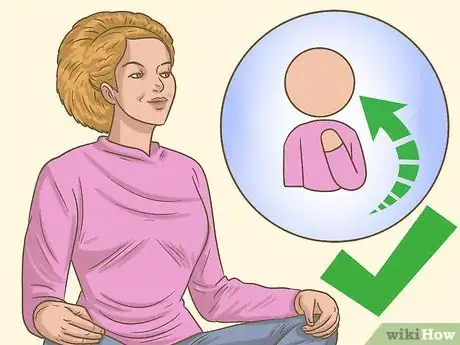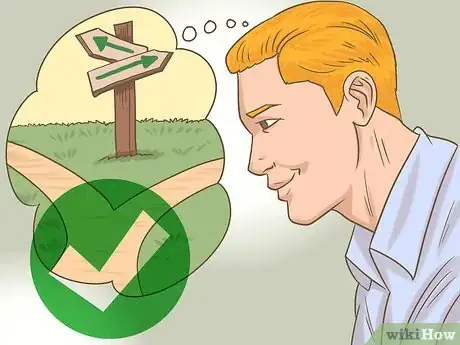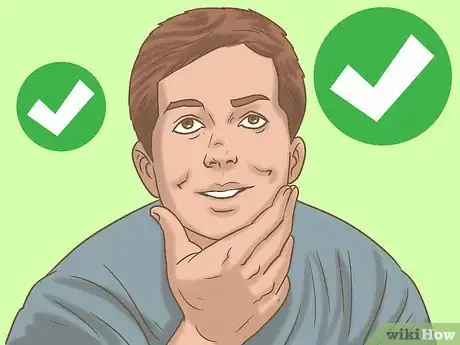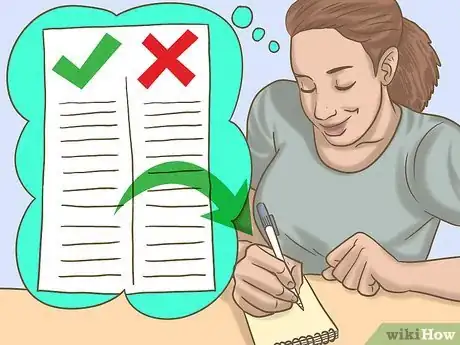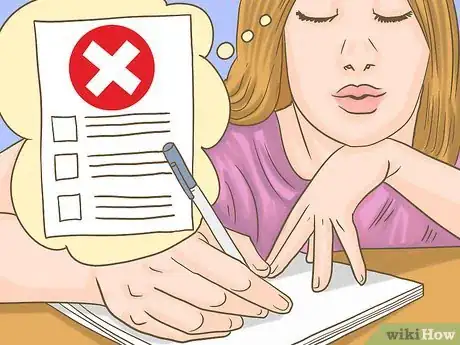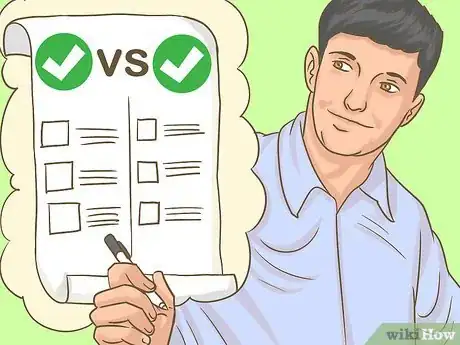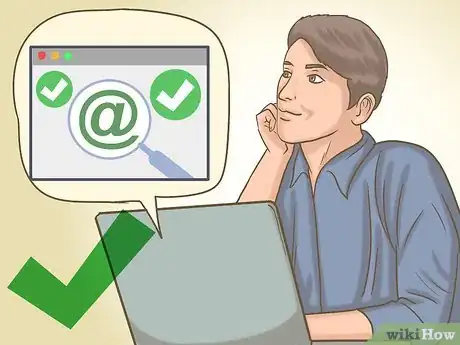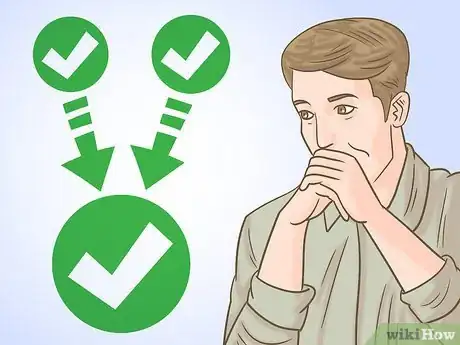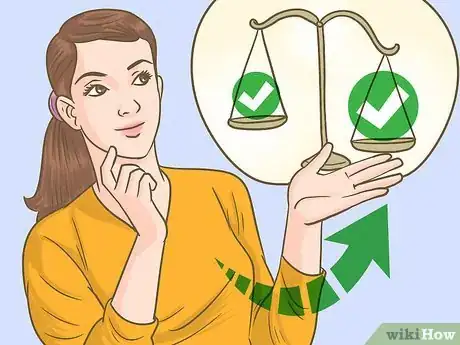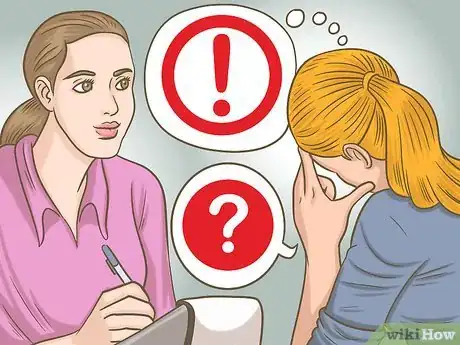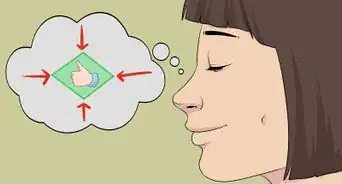This article was co-authored by Trudi Griffin, LPC, MS. Trudi Griffin is a Licensed Professional Counselor in Wisconsin specializing in Addictions and Mental Health. She provides therapy to people who struggle with addictions, mental health, and trauma in community health settings and private practice. She received her MS in Clinical Mental Health Counseling from Marquette University in 2011.
There are 7 references cited in this article, which can be found at the bottom of the page.
This article has been viewed 284,867 times.
Making choices can be tough, especially when you feel a lot hangs in the balance. Whether you're picking a romantic partner, career path, or a new car, you might feel scared about making the wrong choice. By approaching your decision mindfully, you can clear your head and examine your options. Then, contrast the benefits and pitfalls. Your gut can help you determine which decision suits you best.
Steps
Approaching Your Decision Mindfully
-
1Meditate to clear your head. Sit or lie down comfortably and close your eyes, focusing only your breathing for 10 minutes. Try to clear your head of thoughts about your decision and focus on releasing physical tension in your body.
- Try a guided meditation app, such as Relax, or attend a local mindfulness class to reduce your stress level. Focus on breathing deeply in a calm place removed from your phone and other intrusions.
- Sometimes the largeness of a decision can be intimidating. Meditation can help you get in touch with your true feelings and reduce anxiety around making a decision.
-
2Focus on what is right for you rather than what is right for others. Think about whether other people's opinions have been weighing on you about the decision. Has a friend, a professor, or boss made their opinion clear? Making a decision to please others rather than yourself may ultimately make you unhappy as it doesn't address your needs and goals.[1]
- Try to consciously set aside the thoughts of others as you ponder your decision.
- For example, if your best friend loves Italian culture, studying abroad in Italy rather than France may be a no brainer for her. That said, it doesn't mean the same choice would be right for you.
Advertisement -
3Embrace any uncomfortable feelings that accompany your decision. Go easy on yourself if the decision makes you feel stressed or uncomfortable. Try to interpret that as a sign that this crossroads is significant for you and that you care.[2]
- Avoid beating yourself up about having to pass over 1 option. Big decisions can be hard, and ultimately, it likely won't help you feel at peace with your choice.
-
4Remember that both choices could probably work for you. Remind yourself that when you're presented with multiple good options, making a decision can be hard. Put a positive spin on things to take some pressure off your decision: Rather than being stuck, you are lucky to have 2 good choices.[3]
Comparing Your Options
-
1List pros and cons for each option to feel out your preference. Create a list with 2 columns for each choice, 1 for pros 1 for cons. List the benefits and drawbacks of pursuing each path. When you're finished, tally which choice has more benefits than drawbacks.[4]
- Often just the process of making a pros and cons list can help you gain clarity about your feelings. You may find yourself consciously adding more pros to 1 choice so you can pick that option.
- Rather than seeing this as a negative, view this personal bias as great. It helps you understand that you feel more strongly about 1 choice.
- Try weighting each item with a number to show how positive or negative the trait is. A really favorable trait might give 5 points to the pro list and a slightly negative trait might give 1 point to the con list. Subtract the number of cons from the total pros. Whichever choice has a higher number may be the right decision.
-
2Catalog negative consequences of each choice to avoid pitfalls. Make a list of the potential negative consequences of choosing each option, both in the short and long term. This is a good way to narrow your decision if you feel you genuinely have 2 great choices and can't go wrong.[5]
- Consider any opportunities that might close to you if you went with 1 choice.
- For example, if you live in Iowa and are considering moving to Rome, getting in-state tuition at your local university may no longer be an option for you if you move abroad.
-
3Use your gut to make a pros vs. pros list. Create a single list of all the benefits or advantages these 2 choices make available to you. Then, quickly go down your list and assign each benefit to only 1 choice. Don't overthink it; just use your instincts. Look at your final list to see which choice has been assigned more benefits.
- The 2 choices may share some benefits. By performing this exercise, you can decide which choice you feel will help you accomplish certain goals or hopes more.
- For example, let's say you're choosing between 2 vacation destinations. Both might be “bucket list” spots. You'd write “bucket list” on your pros vs. pros list. Going through the list quickly though, you may find that 1 destination feels more like a must-do life experience than the other.
- Furthermore, you can simply determine how you felt when you were first faced with the decision. If you immediately favored 1 side over the other, perhaps that's the right decision for you.
-
4Use professional resources to objectively compare the 2 choices. Seek out reliable consumer ratings resources, such as Consumer Reports or CNet, if your decision involves comparing products. You can directly compare your 2 options based on their features, safety ratings, and overall customer satisfaction.[6]
- These websites are a great way to gain clarity about a product as you can prioritize the most important aspects your decision.
- For example, if you are trying to choose between 2 car seats for a baby and safety is your biggest priority, you can make an informed decision based on objective research using this method.
-
5Examine whether you need to choose only 1 option. See if there's a way your 2 choices can work together, whether it's by finessing your schedule or doing them sequentially. Sometimes, while 2 choices may seem to be in conflict with each other, there is actually a way for them to work in harmony.
- For example, you might feel you need to choose between taking violin lessons or joining a soccer league, when actually your schedule might be able to accommodate both activities on different days of the week.
Making a Difficult Choice
-
1Consult a trusted friend or family member. Seek out someone who is not directly impacted by the decision but who knows you really well. Tell them that you trust their opinion and want to know what they feel is truly in your best interest.[7]
- You might say, “I'm really struggling about whether I should choose the job in Tulsa or Boston. Knowing what you know about my personality and career goals, which do you think would be the best fit for me?”
- It can be helpful to hear someone you love confirm a choice you suspected all along.
-
2Flip a coin if you are stuck. Assign each side of a coin 1 of your 2 choices. Throw the coin up in the air. Whichever side faces up when it lands is the choice you move forward with.[8]
- While this may seem arbitrary, if you're really stuck, an exercise like this can help you move past a difficult decision.
- If your heart drops when the coin lands, that may be an indication that you should make the other choice.
-
3Take the path of least resistance when presented with 2 good choices. Make your life easier by picking the choice that fits with the rest of your life and priorities. A choice you need to rearrange your whole life around may ultimately cause more anxiety and stress than it is worth.[9]
- For example, while you may want to get a dog, breaking your lease to move to a dog-friendly apartment may involve a lot of stress and financial sacrifice.
- Consider the worst-case scenario with each decision. If you're choosing between buying a car and buying a motorcycle, you might consider that a car might be safer if you get into an accident.
-
4Seek out a therapist to parse difficult feelings. Talk to a professional counselor or mental health professional if you feel crippled by your decision. They can help you formulate a decision-making strategy that makes you feel confident moving forward.[10]
Expert Q&A
Did you know you can get premium answers for this article?
Unlock premium answers by supporting wikiHow
-
QuestionHow do I go about choosing between two different potential roommates?
 Trudi Griffin, LPC, MSTrudi Griffin is a Licensed Professional Counselor in Wisconsin specializing in Addictions and Mental Health. She provides therapy to people who struggle with addictions, mental health, and trauma in community health settings and private practice. She received her MS in Clinical Mental Health Counseling from Marquette University in 2011.
Trudi Griffin, LPC, MSTrudi Griffin is a Licensed Professional Counselor in Wisconsin specializing in Addictions and Mental Health. She provides therapy to people who struggle with addictions, mental health, and trauma in community health settings and private practice. She received her MS in Clinical Mental Health Counseling from Marquette University in 2011.
Professional Counselor
-
QuestionHow do I choose between family and work?
 Trudi Griffin, LPC, MSTrudi Griffin is a Licensed Professional Counselor in Wisconsin specializing in Addictions and Mental Health. She provides therapy to people who struggle with addictions, mental health, and trauma in community health settings and private practice. She received her MS in Clinical Mental Health Counseling from Marquette University in 2011.
Trudi Griffin, LPC, MSTrudi Griffin is a Licensed Professional Counselor in Wisconsin specializing in Addictions and Mental Health. She provides therapy to people who struggle with addictions, mental health, and trauma in community health settings and private practice. She received her MS in Clinical Mental Health Counseling from Marquette University in 2011.
Professional Counselor
References
- ↑ https://au.reachout.com/articles/decision-making-101
- ↑ https://www.psychologytoday.com/us/blog/laugh-cry-live/201706/how-mindfully-make-important-life-decisions
- ↑ https://www.theguardian.com/lifeandstyle/2022/jun/05/how-to-make-good-decisions
- ↑ https://www.umassd.edu/media/umassdartmouth/fycm/decision_making_process.pdf
- ↑ https://www.ted.com/talks/sheena_iyengar_choosing_what_to_choose/transcript?language=en
- ↑ https://www.umassd.edu/media/umassdartmouth/fycm/decision_making_process.pdf
- ↑ https://au.reachout.com/articles/decision-making-101
- ↑ https://www.pbs.org/newshour/economy/cant-decide-just-flip-coin
- ↑ https://www.psychologytoday.com/us/blog/laugh-cry-live/201706/how-mindfully-make-important-life-decisions
About This Article
It can be difficult to choose between two things, but you can use comparison techniques to make the decision-making process easier. Start by writing a list of pros and cons for both choices. Once you’ve written the lists, tally the number of pros and cons for each choice to help you decide. If you feel stuck between two good options, try listing the potential negative consequences of each option. Include both short-term and long-term consequences to see which choice has the most drawbacks. If you’re having trouble making a difficult choice, try talking to someone you trust. Listen to their opinion and trust that they have your best interests at heart. For more advice from our Counselor co-author, like how to approach the choice mindfully, read on!

